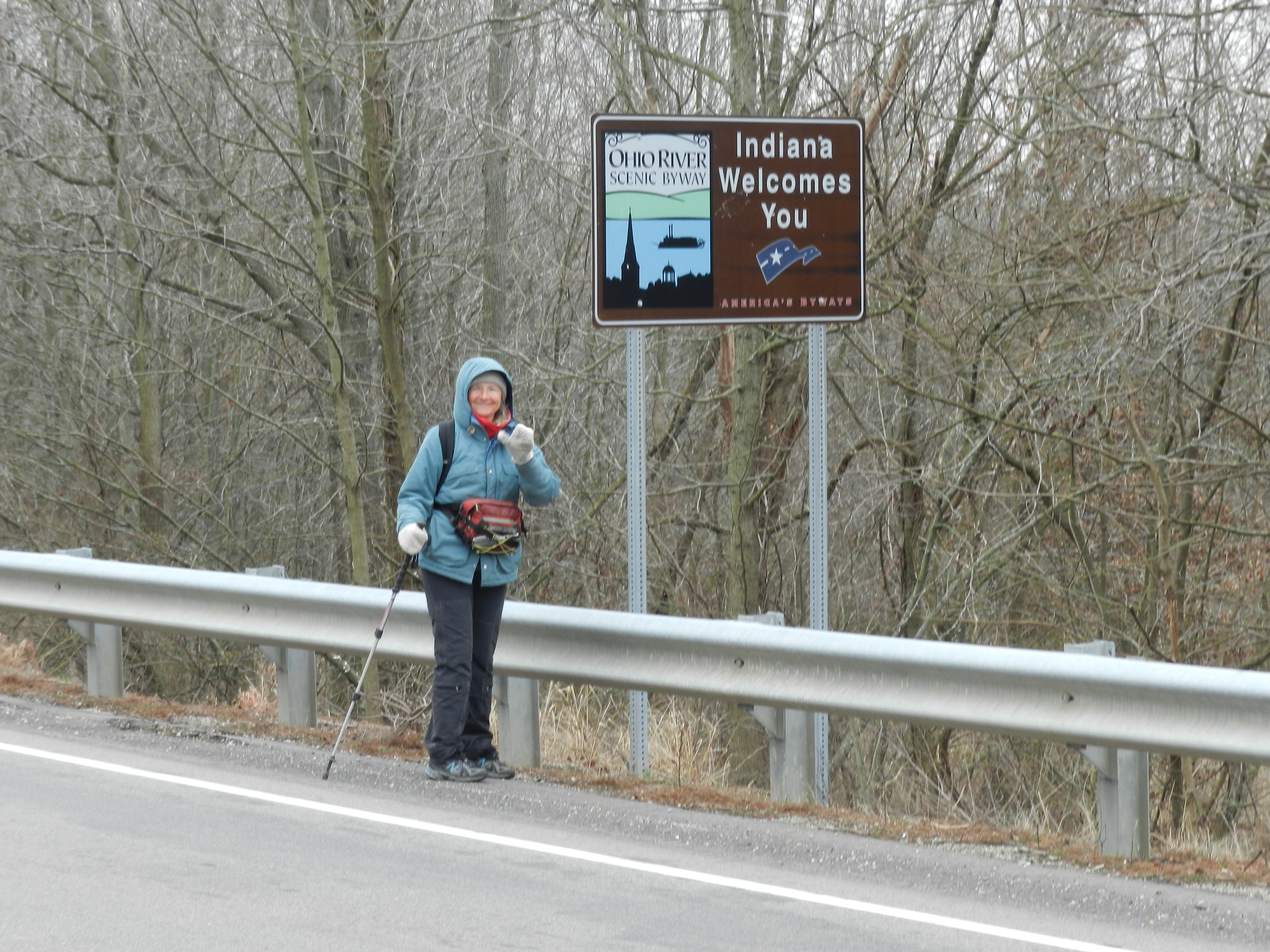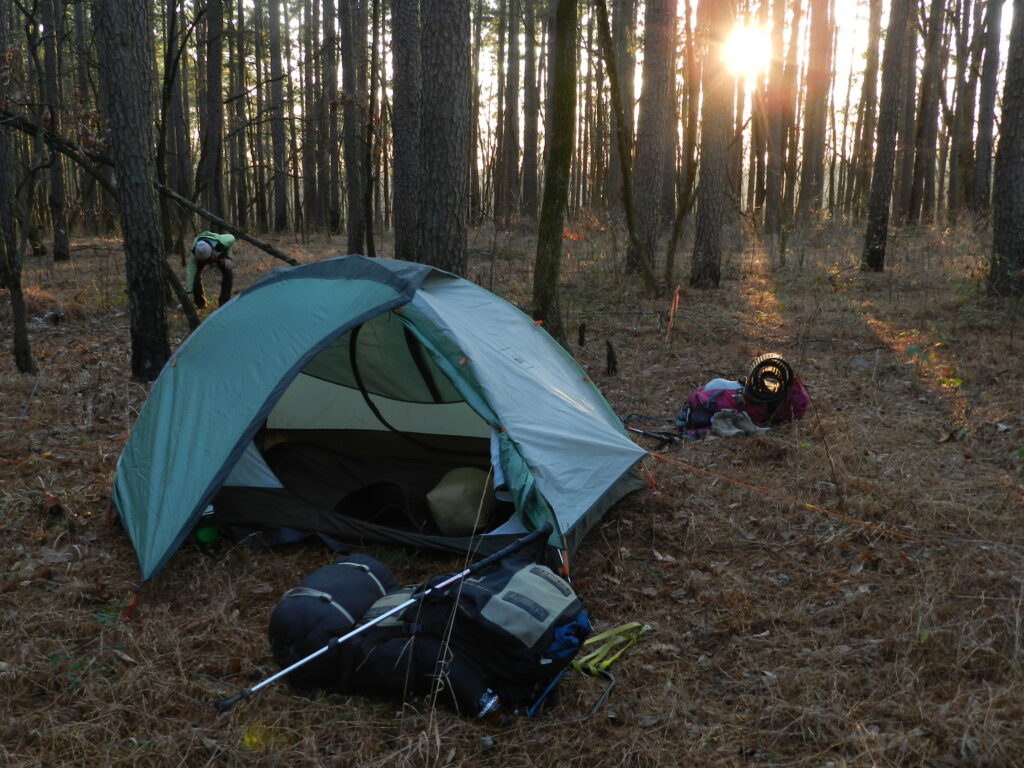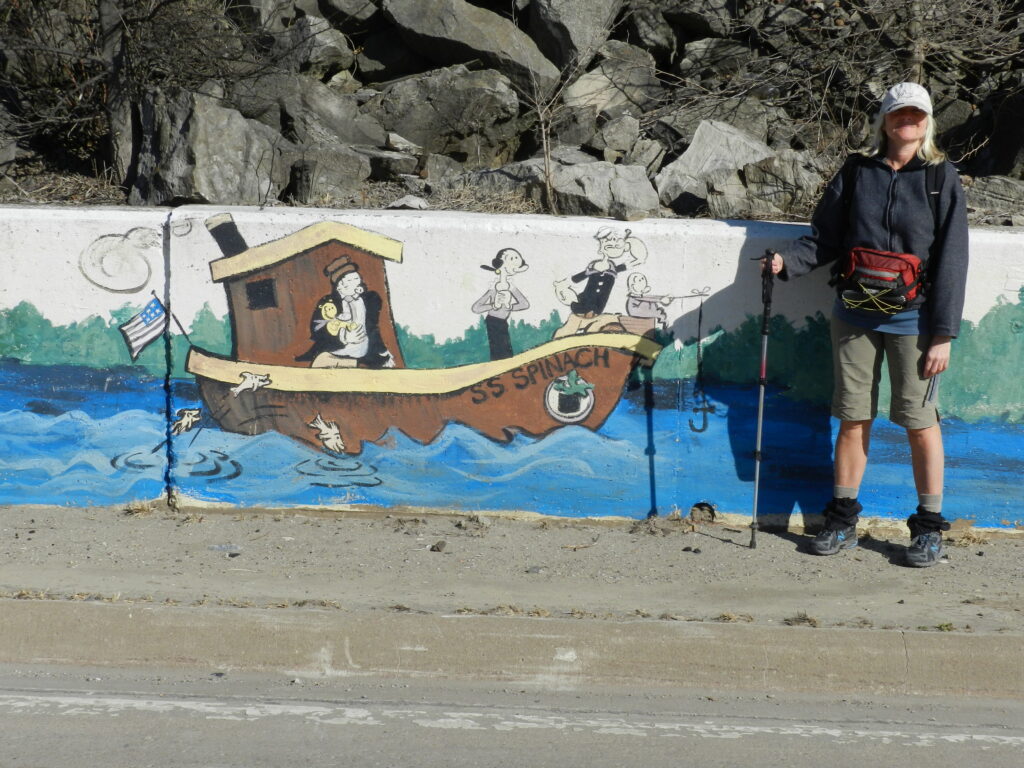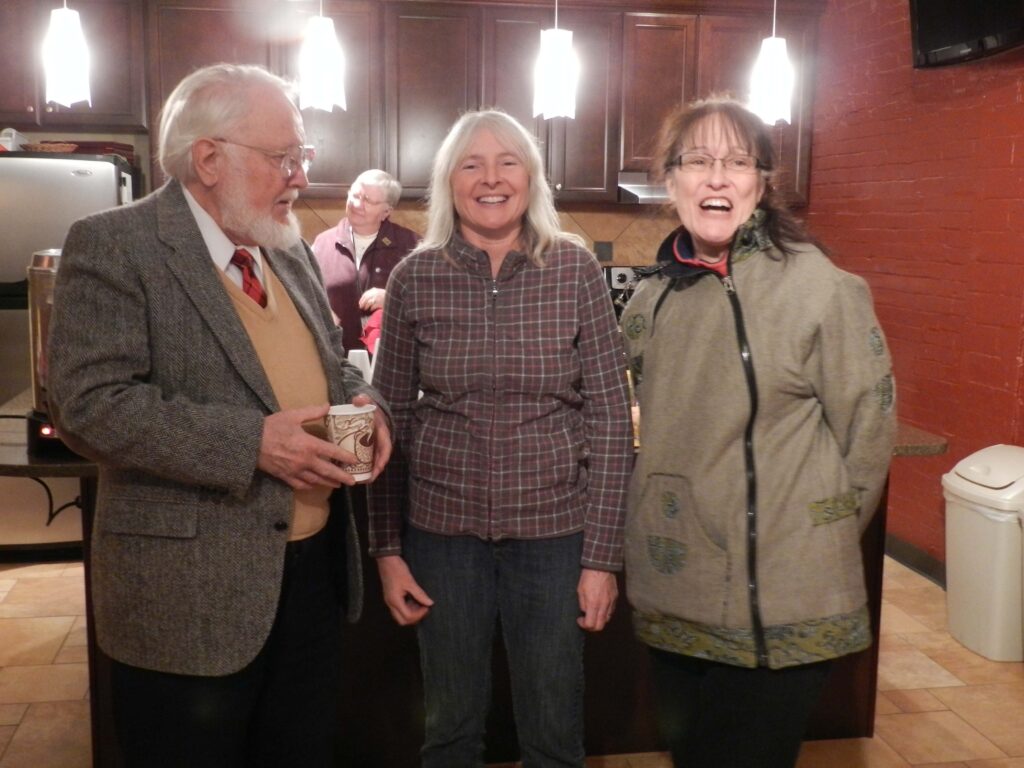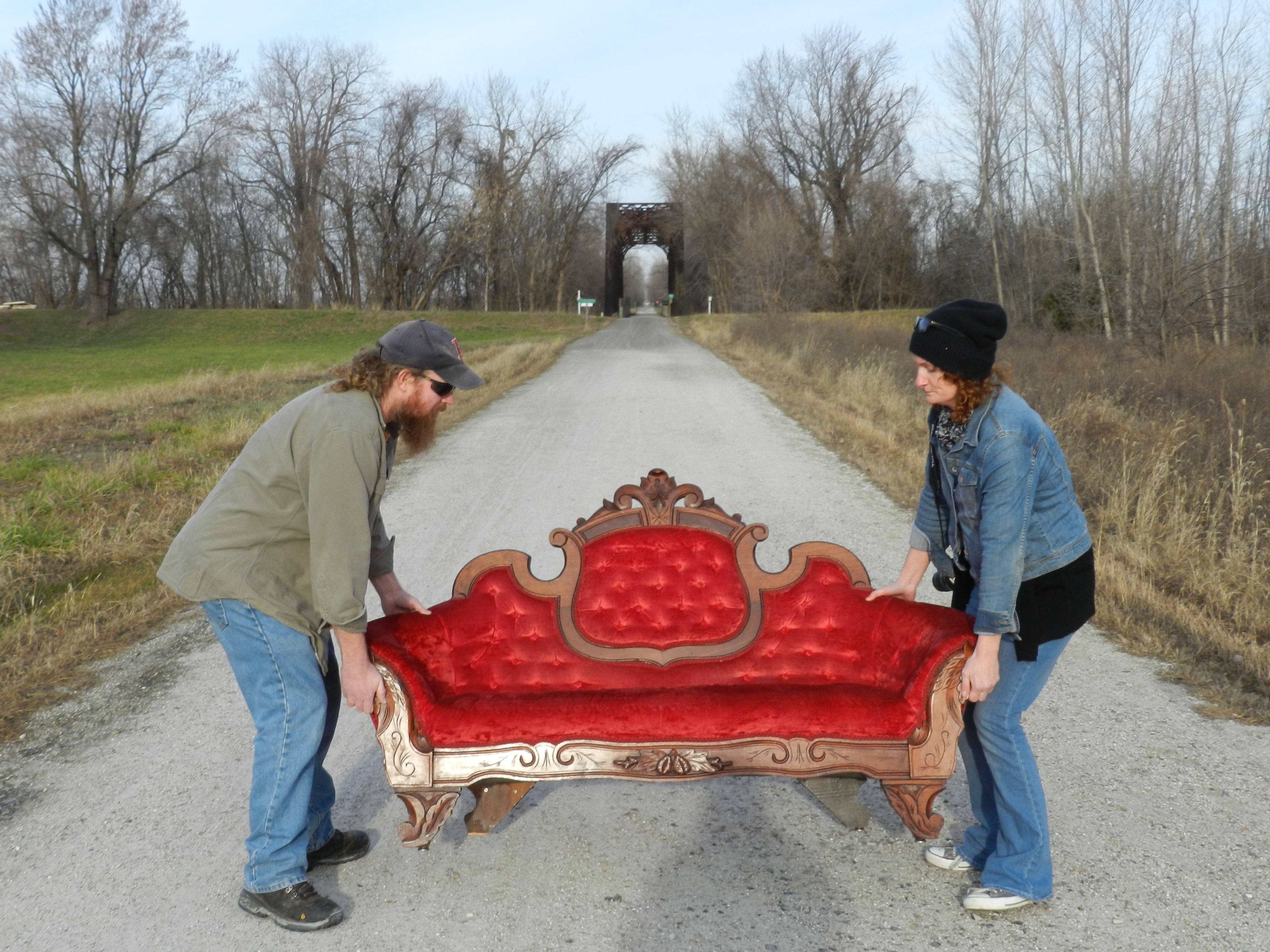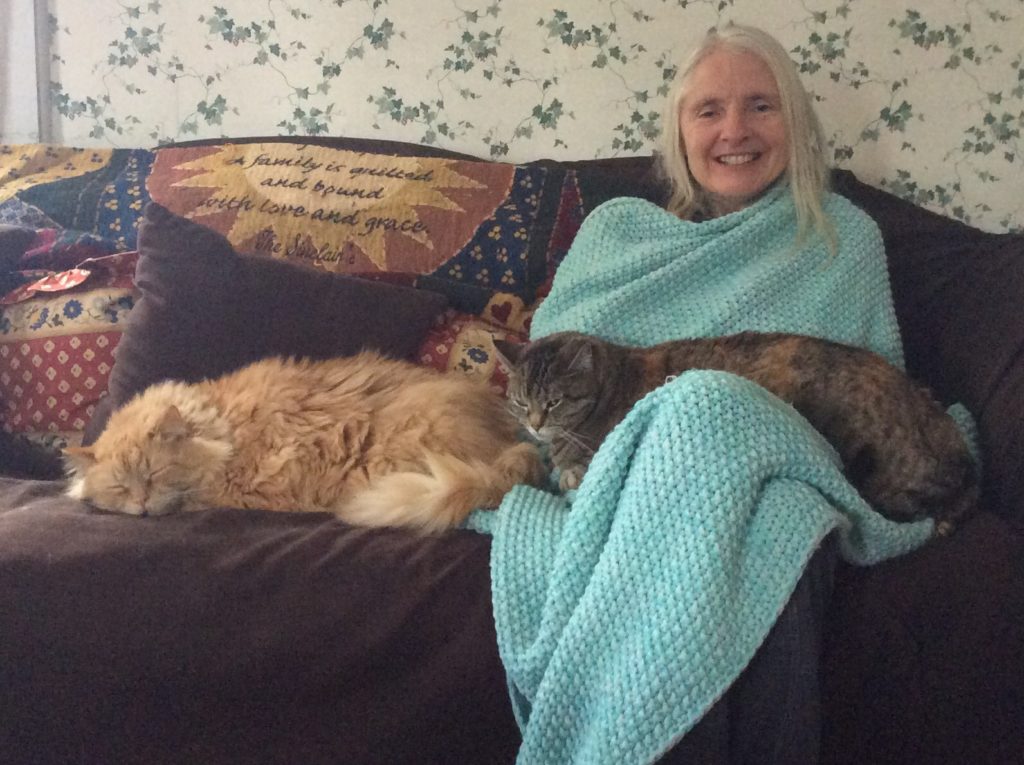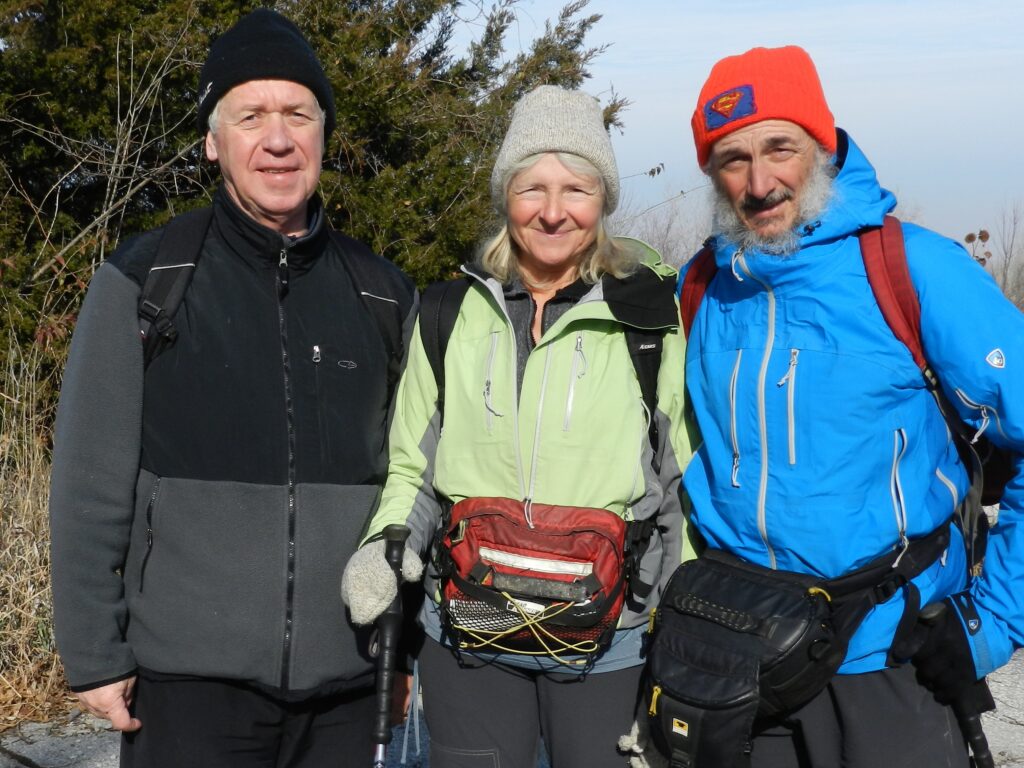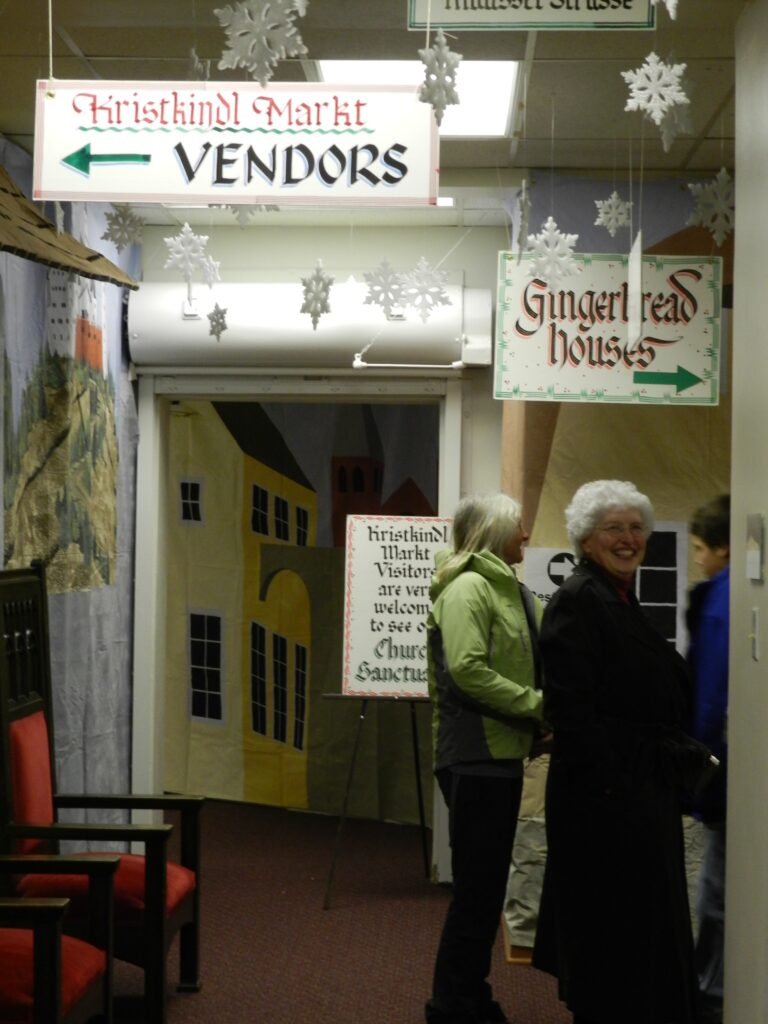Our 15 miles of fame from Evansville print and television media extended further. As we continued on roads through this stretch people hailed us from passing cars, from workplaces we passed and even from a graveyard (a live person visiting her Mom’s grave, not a ghost). This continued until we started hiking by an establishment called Put N Take.
The proprietor and his friend came out to invite us into the store. I got the sense that they did not know who we were, besides two grungy looking people hiking by on a cold, raw day. They invited us to join them sitting around a woodstove, amidst a shop that looked like a cross between a firearms and antique store. They invited us to stay longer, but an impending rainstorm persuaded us to get a few more miles in. We parted with two multipurpose knives branded with Put N Take advertising, which we discovered was short for “Put down your money and Take away some merchandise.”
We continued to hike as the heavens poured down on us until we reached Waninger Auto Parts. Since I had another speaking engagement away from the trail, we waited there for Ky to pick us up and bring us to the St. Peters UCC in Lamar. Pastor Chip and Gayle Jahn welcomed us into their home for our stay there, enabling us to avoid the continuing cold deluge which lasted throughout the following day.
I presented to their Young Disciples program which explored the “fruits of the spirit.” I wove tales of kindness and community from the journey to easily fit their curriculum, but as was so often the case during the journey I came away with as much inspirational material as I provided. The story of Young Disciples member Ethan Roos would rival “confuse who is giving and who is receiving” as one of the most inspirational lessons from the journey.
Small towns like Lamar do not have a noticeable homeless population. Thus ten year old Ethan did not witness his first homeless person until his parents brought him to a Cincinnati Reds baseball game. On the way back to the hotel from the game Ethan saw them in their urban habitats, such as a parking garage or a bridge. Once they reached their hotel Ethan cried for an hour (his Mom’s words, Ethan claimed he “had a tear leaked out”) and vowed to do something about such an injustice.
He rallied the Young Disciples group to support a homeless shelter in Aurora, raising $3500 in just a couple months. They called around for donations with the air and confidence of a 501(c)3 charity. They had too much compassion and too little experience to know what they were doing was difficult.
We had a great time with our hosts Chip and Gayle during our day off. Chip and I discovered we had similar entrepreneurial dreams. I wanted to produce a calendar with road kill photos from our journey; Chip wanted to publish a scratch and sniff road kill book. We decided we should collaborate on a scratch and sniff roadkill calendar some day.
Our next day of hiking brought us to the town of Santa Claus which, as my research indicated, had the historical lowest temperature on our journey for the same time and place when we would be passing through, twenty-five below zero. Though the weather remained cold and rainy for us that day, we never got close to that kind of cold during the hike in a year that was warmer and wetter than usual.
We stopped at Holiday Foods in town to supplement our lunch. Some folks recognized us from the media coverage and stopped to chat; some folks stopped to chat even though they did not recognize us. Eighty year old Walter Beumel had not seen the publicity but sat down with us at the picnic table outside the store as we were eating lunch. He invited us to stay at his 100-acre ranch, adding that we were doing what he always wished he had the guts to do. We really enjoyed Walter’s company; really wanted to stay with him overnight at his ranch, but we had to meet Ky at the end of the day and travel with her to Tell City.
Rebecca Fenn learned about us through a UCC church bulletin, came to see us while I was presenting to the Young Disciples in Lamar and invited us to stay with her and husband Mark in Tell City for the purpose of discovering the vibrant community initiatives going on down there. Tell City had a coalition of services with a particular emphasis on educating people about generational poverty and addressing the needs through various charitable organizations. The current model reminded me of our visit to Marion, but their immediate goal was to locate the different services in one building, similar to the Hedges School in Mt. Vernon.
Rebecca’s passion and compassion came through impressively when I interviewed her. The couple then took us on a tour of Tell City with evident pride that rivaled the pride of Chester being the home of Popeye. I could hear in the background of the interview that Cindy was engaged. When Rebecca asked if she talked too long, Cindy responded emphatically that her interview was just right.
The four days of our journey after Newburgh underscored the tradeoffs we made on this hike. Visiting Lamar and Tell City fueled our public mission for kindness and community. Without Ky and some publicity those field trips away from our route would not have been made. Yet the most treasured acts of kindness towards us come from unexpected sources like Put N Take and Walter Beumel, who we meet along our route but know nothing about who we are, except that we are hiking a long way. We must pass on their offers of kindness and friendship because of obligations resulting from our public mission.
The day after Tell City, unexpected kindness along our route combined with our public mission. We were full packing for this stretch but on the first day ran into brothers Charlie and Allan Waninger, cousins to Scott Waninger of the Waninger Auto Parts store we visited. They spotted us as we neared their farm and, having read about us in the paper, came out to talk with us.
Charlie wanted us to join him and his girlfriend for dinner later that day and suggested an alternate route for us to follow that would coincidentally make a rendezvous with him at the end of the day easier. He even transported our packs for us a few miles along this route to sweeten the offer. Though we took him up on the alternate route the distance would be too great to make the rendezvous in time and where we might end up guerilla camping that night became a question mark.
Fortunately, another solution presented itself. Motorists Claire, Ross and Corey had seen our media coverage and stopped to chat. Claire made some calls and arranged for us to stay with her mother Carla, who was watching Claire’s daughter for that Saturday evening and lived just a few miles further along our route. Carla was married to Kurt Cooper, a high school English teacher, and both of them gave us a warm welcome into their homes when we arrived.
“Coop” arranged for us to speak at Perry Central School two days later. Over a hundred students came to my first presentation for a high school. I also spent time with one of Coop’s classes. Though I was under the weather with a foggy head that lasted throughout the day, and felt my presentation lacked energy, the students received my message well. Two students came up to me afterwards to say we were their new heroes.
The Sunday in between our stay with Coop and Carla and our presentation at Perry Central we attended a service and potluck at Crawford Consolidated United Methodist Church (UMC) in Leavenworth. Pastor Jason Walton’s sermon was about belonging to others. The potluck was not for our benefit, but rather the tradition of Crawford on every fifth Sunday. I spoke a little bit about the kindness we witnessed at the luncheon, drawing from Micah 6:8: “Do justice, love kindness and walk humbly with your God.”
We stayed at the church while Ky slackpacked us on our way into and out of Leavenworth. Though I may have lacked energy during this stretch, Cindy was in high spirits throughout the whole week. A look at the photos from this period revealed Cindy to be always smiling, sometimes with her impish grin of old. The warmer weather than usual for winter accounted for some of this. The week that historically projected to be our coldest had a couple of cold rainy days, flood causing deluges actually, but we also had late January days when the warm sun shined and flowers temporarily bloomed.
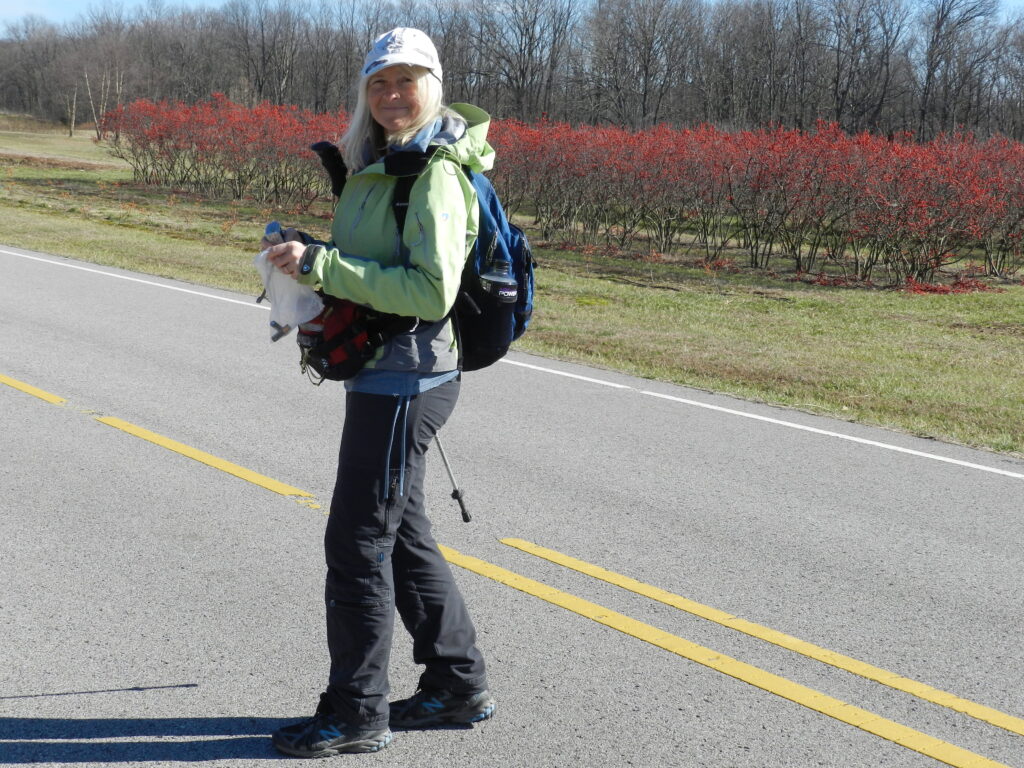
We went on this journey knowing the potential of long distance hiking for alleviating stress, but that was not the only tonic provided. Awe-inspiring beauty no doubt helped Cindy’s mind as well, but above all else Cindy felt joy. We felt the joy of life, the joy of living and the joy of sharing these experiences together. Without at least an MRI scan I suppose there was no way to definitively declare her brain health to be returning, but she certainly felt like that was happening.

